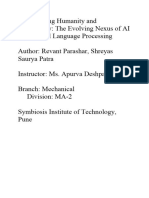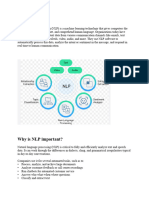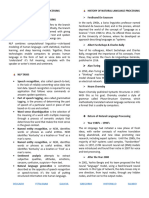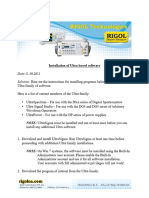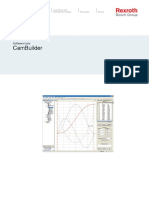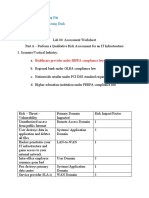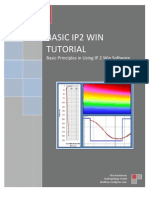0% found this document useful (0 votes)
153 views2 pagesNLP Basics for Tech Enthusiasts
Natural language processing (NLP) involves developing algorithms and techniques that allow computers to process and analyze large amounts of natural language data such as text and speech to perform tasks like language translation, sentiment analysis, question answering, and text generation. Key concepts in NLP include text processing, language understanding, language generation, machine learning and deep learning techniques, word embeddings, and language models.
Uploaded by
reachudaycCopyright
© © All Rights Reserved
We take content rights seriously. If you suspect this is your content, claim it here.
Available Formats
Download as TXT, PDF, TXT or read online on Scribd
0% found this document useful (0 votes)
153 views2 pagesNLP Basics for Tech Enthusiasts
Natural language processing (NLP) involves developing algorithms and techniques that allow computers to process and analyze large amounts of natural language data such as text and speech to perform tasks like language translation, sentiment analysis, question answering, and text generation. Key concepts in NLP include text processing, language understanding, language generation, machine learning and deep learning techniques, word embeddings, and language models.
Uploaded by
reachudaycCopyright
© © All Rights Reserved
We take content rights seriously. If you suspect this is your content, claim it here.
Available Formats
Download as TXT, PDF, TXT or read online on Scribd
/ 2







